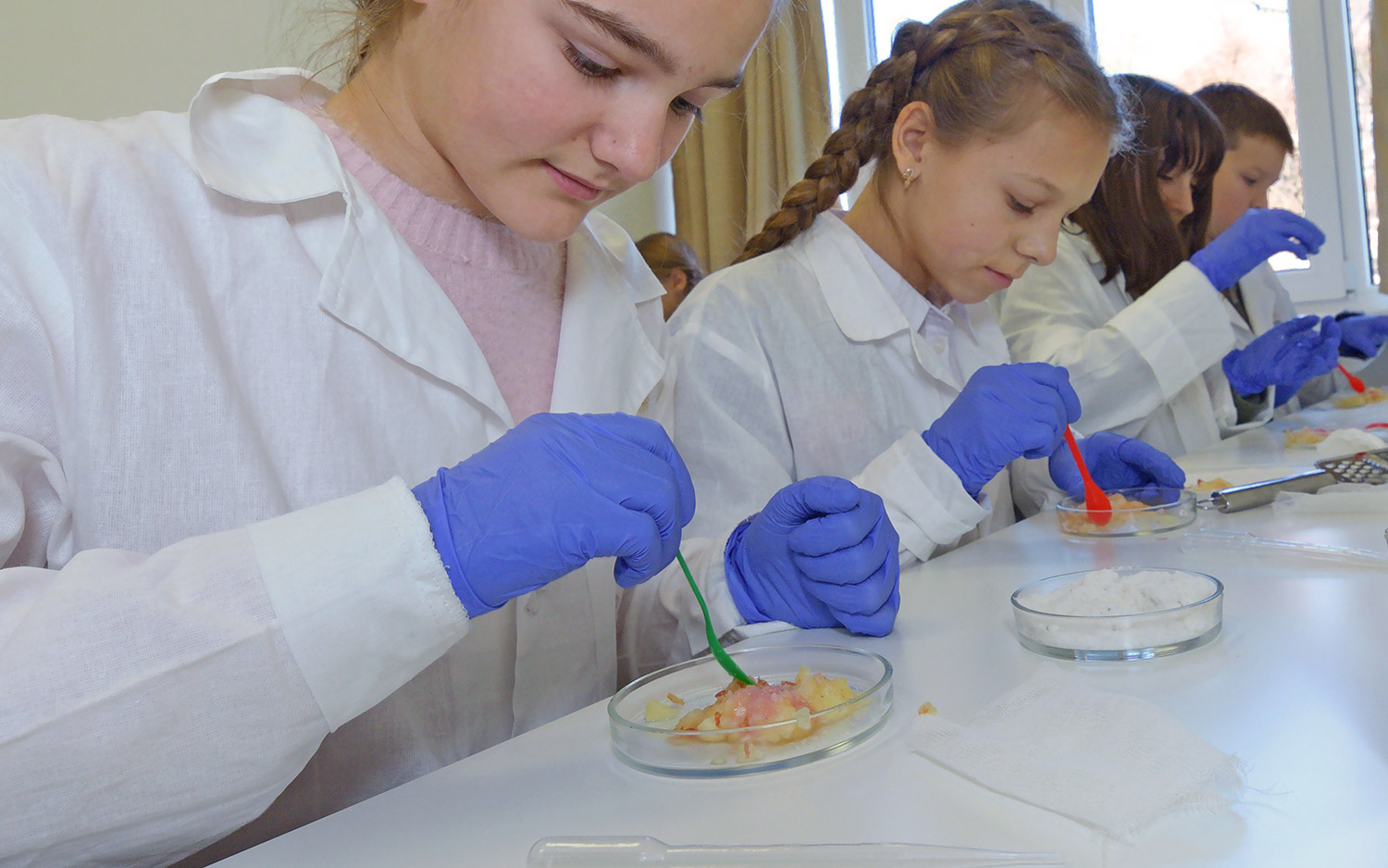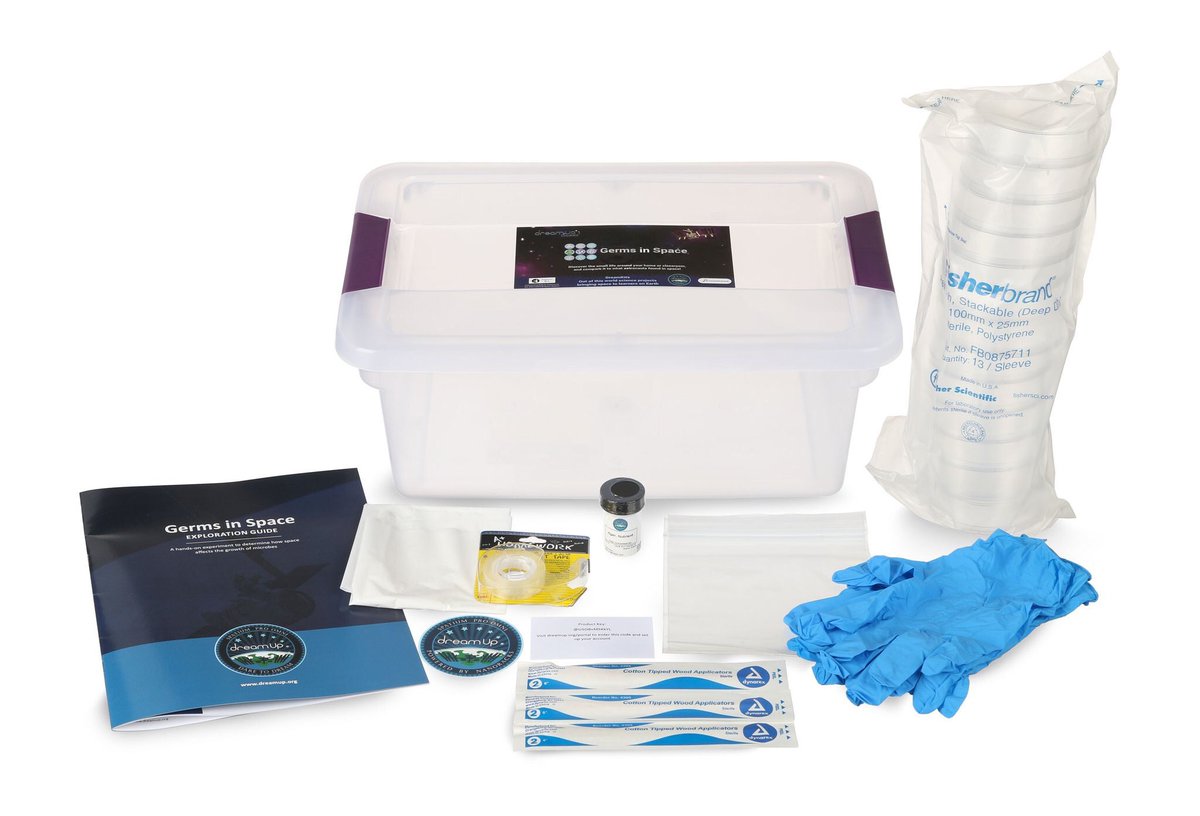
Germinating a Passion for Space by Studying Germs in Space (Op-Ed)

Carie Lemack is co-founder and CEO of DreamUp, the first company to bring space into classrooms and classrooms into space. A former national security policy expert/advocate and producer of an Academy Award-nominated film, Lemack is a proud alumna of Space Camp and a supporter of all space cadets reaching for the stars. Lemack contributed this article to Space.com's Expert Voices: Op-Ed & Insights.
If you want to capture the attention of the next generation of scientists, try captivating them with the wonders of space. Connect what they do on the ground to what happens above Earth. Give them something tangible — a way to experiment — that transforms theory into practice. Aspiring scientists need to know that they have a stake in their nation's space programs.
Instilling a passion for science, technology, engineering and mathematics (STEM) begins with a hands-on approach to solving problems. My company, DreamUp — through a partnership with NanoRacks — aims to spark that inspiration by allowing students to send their own experiments to the International Space Station. [To Inspire Future Space Travelers, Bring Space-Based Research to Schools]

One of the experiments we offer, the Germs in Space DreamKit, enables learners to study microbes on Earth and in orbit from the comfort of the classroom while answering the following question: How can teachers educate students without alienating them, as many young learners find STEM to be a source of intimidation rather than a means of inspiration?
I believe the answer is tactile, that once you wear the blue rubber gloves and unwrap the sterile swabs — once you use the petri plates with agar — you immerse yourself in the world of science.
The DreamKit is a world with a guidebook and detailed instructions, including lessons about space and in-depth descriptions of the science behind a particular experiment. Along with access to an exclusive online portal, where students can compare their results with those from the International Space Station, the activities are as entertaining as they are enlightening — who doesn't love seeing what germs lie in wait in their classrooms and homes?
The DreamKit is an example of how we can narrow the perceived distance between what students do in or outside the classroom, while astronauts work within the ultimate laboratory that is outer space.
Get the Space.com Newsletter
Breaking space news, the latest updates on rocket launches, skywatching events and more!
If parents, teachers, and students emulate this example, all the better.
My goal is not to monopolize the teaching of STEM, but to reimagine methods of teaching this subject to students who want a more interactive approach to STEM. Parents, teachers, even after-school program facilitators can benefit from space-based educational products like DreamKits, whether in their classrooms, homes or other learning environments. They can all use these tools and give learners a chance to reach for the stars no matter where they may be.
If America's space program is to thrive, it must have the resources it needs. Its future depends, therefore, on the attitudes and skill sets of present-day students. Its fate is a matter of public perception, abilities and feelings among most citizens.
If students feel like they are participants in a great cause, rather than passive observers in a minor undertaking, they can not only be the saviors of space but the basis of salvation for programs that promote STEM.
By infusing STEM with a set of physical tools, we can advance learning and advocate higher standards of learning.
Experiments can engage students — and personalize their engagement with the crew of the International Space Station — so they have an interest in STEM that exceeds their most generous expectations.
The excitement that ensues is what we want to accomplish, so learning STEM can be an exercise in fun and not a futile attempt to increase involvement in a discipline that young learners too often dismiss as being too difficult or boring.
We need a new approach to teaching and studying STEM. The fate of future generations of innovators and explorers depends on what we do today.
Follow us on Twitter @Spacedotcom and on Facebook. Original article on Space.com.
Join our Space Forums to keep talking space on the latest missions, night sky and more! And if you have a news tip, correction or comment, let us know at: community@space.com.

